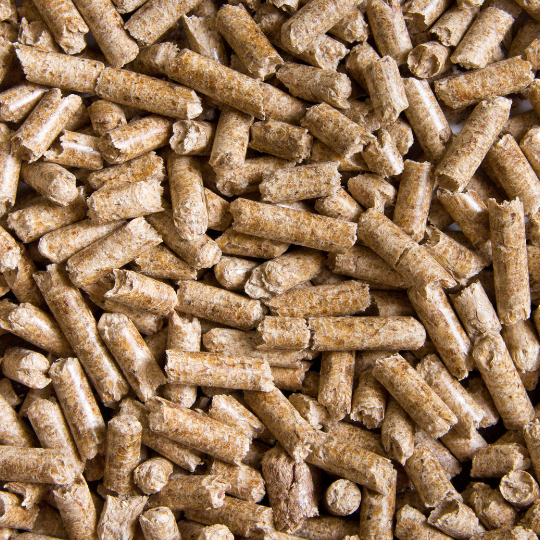
Wood pellet price per ton has become a hot topic as the demand for renewable energy rises. Historically, wood pellets emerged in the 1970s as an eco-friendly heating alternative. Today, they are widely used in homes and industries, driven by sustainability goals. Prices can fluctuate based on factors like supply, demand, and production costs. Understanding these dynamics helps consumers make informed choices. This post dives into current trends, pricing strategies, and what to expect in the future of wood pellets. Stay tuned for insights that could save you money while keeping your carbon footprint low.
Understanding Wood Pellet Prices
Factors Influencing Costs
Wood pellet prices depend on several key factors. Raw material availability plays a significant role. If timber is scarce, costs can rise sharply. Production methods also affect pricing. Efficient manufacturing lowers expenses, while outdated techniques increase them.
Transportation costs are another factor. Shipping wood pellets over long distances raises the overall price. Market demand impacts wood pellet prices as well. High demand often leads to increased costs, while low demand can result in discounts.
Regional Price Variations
Regional differences significantly affect wood pellets prices. In Europe, for instance, the average wood pellets export price fluctuates based on local supply and demand dynamics. Northern European countries often have higher costs due to limited production capacity and shipping rates.
In contrast, North America typically enjoys lower prices due to abundant raw materials and established production facilities. The average wood pellets import price varies too, depending on international trade agreements, tariffs, shipping rates, and growth that influence market accessibility.
Seasonal Price Fluctuations
Seasonal changes also impact wood pellet pricing. Demand peaks during winter months when heating needs rise. This seasonal spike can lead to higher prices. Conversely, during warmer months, demand drops, causing prices to fall.
Producers adjust their pricing strategies based on these fluctuations. They may offer discounts in off-peak seasons to maintain sales volume. Understanding these patterns, including shipping rates, is crucial for consumers looking to purchase wood pellets at the best price.

Comparing Wood Pellet Types
Hardwood vs Softwood Pellets
Hardwood pellets come from trees like oak and maple. They generally provide a higher energy output. This makes them suitable for heating applications. Softwood pellets, made from pine or spruce, burn hotter but faster. Their lower density means they often produce more ash. Both types have unique benefits depending on the intended use.
Premium vs Standard Pellets
Premium pellets are made from high-quality wood with low moisture content. They burn efficiently and produce less ash. This quality results in better performance in stoves and boilers. Standard pellets, while cheaper, may contain bark or other materials. They can lead to more maintenance due to higher ash production. Choosing between them depends on budget and heating requirements.
Bulk vs Bagged Pellets
Bulk pellets are delivered in large quantities, often using wood pellet processing equipment for transport. They tend to be more cost-effective for those with storage solutions. Bagged pellets are convenient for smaller users or those without space for bulk storage. They offer flexibility but usually come at a higher price per ton.

Economic Benefits of Wood Pellets
Cost-Effectiveness for Heating
Wood pellets provide a cost-effective solution for heating. They are often cheaper than traditional fossil fuels. In many areas, the price per ton of industrial wood pellets remains stable compared to oil and gas prices. This stability is beneficial for consumers. Investing in wood pellet plants can lower heating costs significantly. Many households and businesses now rely on wood pellet fuel for their heating needs.
Environmental Impact and Savings
Using wood pellets contributes to a cleaner environment. They are considered a renewable biomass fuel source. The production of wood pellets generates less carbon dioxide than fossil fuels. This reduction helps combat climate change. Moreover, several wood pellet consumption projects focus on sustainable sourcing. These initiatives ensure that wood pellet processing adheres to eco-friendly practices. As a result, consumers not only save money but also contribute positively to the environment.
Long-Term Financial Benefits
Investing in wood pellet production offers long-term financial benefits. The global wood chip pellet market is expanding rapidly. Countries are increasing their wood pellet exports, leading to greater market demand. Wood pellet production capacity continues to grow, ensuring supply meets this demand. A complete wood pellet production line can enhance efficiency and lower costs for producers. Thus, businesses in major wood pellet production areas stand to gain financially over time.
How to Buy Wood Pellets
Finding Reliable Suppliers
Finding a trustworthy supplier is crucial. Look for companies with a strong reputation in the wood pellet supply market. Research online reviews and ask for recommendations from local users. Many suppliers offer wood pellets produced from sustainable sources. This ensures quality and supports environmental goals.
Check if the supplier provides certifications. These may include ENplus or DINplus, which signify high standards. Consider suppliers that have consistent stock levels to avoid shortages. Some suppliers may even offer wood pellets imports from other regions, providing a wider selection.
Evaluating Purchase Options
Evaluate different purchasing options before making a decision. Compare prices from various suppliers to find the best deal. Buying in bulk often results in lower costs per ton. Some retailers may offer delivery services, which can save time and effort.
Look into seasonal sales or promotions. Often, suppliers reduce prices during off-peak seasons. Some suppliers allow customers to pre-order for future delivery at a locked-in price.
Tips for Cost Savings
To save on costs, consider local suppliers first. Transporting wood pellets over long distances can increase prices significantly. Store wood pellets properly to prevent spoilage and maintain quality. A dry, cool space is ideal for storage.
Joining buying groups can also lead to discounts. These groups pool resources to purchase larger quantities together, reducing overall costs.

Final Remarks
Understanding wood pellet prices is key to making informed choices. You’ve learned about the different types of pellets, their economic benefits, and how to buy them. This knowledge empowers you to choose wisely, ensuring you get the best value for your investment.
Stay ahead by keeping an eye on market trends and price fluctuations. Your heating needs deserve the best options available. Don’t hesitate to explore local suppliers or online resources for competitive pricing. Take action today—secure your wood pellets and enjoy a cost-effective heating solution this season.
Frequently Asked Questions
What factors affect wood pellet prices?
Wood pellet prices are influenced by supply and demand, production costs, transportation expenses, and seasonal variations. Local availability also plays a significant role in pricing.
What is the typical wood pellet price per ton?
On average, wood pellets range from £150 to £250 per ton. Prices may vary based on location, quality, and market trends.
Are there different types of wood pellets?
Yes, there are several types of wood pellets, including hardwood, softwood, and blended options. Each type has unique properties that affect burn efficiency and price.
Can I save money by buying in bulk?
Buying wood pellets in bulk often leads to cost savings. Many suppliers offer discounts for larger orders, reducing the overall price per ton.
How can I find the best wood pellet supplier?
Research local suppliers online, read customer reviews, and compare prices. Look for companies with a good reputation and transparent pricing policies.
Are wood pellets environmentally friendly?
Yes, wood pellets are considered a renewable energy source. They produce fewer emissions than fossil fuels and contribute to sustainable forestry practices when sourced responsibly.
How should I store wood pellets?
Store wood pellets in a dry, well-ventilated area to prevent moisture absorption. Use airtight containers or bags to maintain their quality and efficiency.
In conclusion, if you are eager to delve deeper into the details of coir products, feel free to explore our website at www.bertwin.com.au. Additionally, for direct and instant connection with our team, you can reach us through the following WhatsApp link here. We look forward to providing you with the information and assistance you need.
